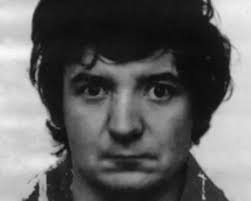The Full Story of the Peter Sullivan Case
Peter Sullivan spent 38 years in jail for the 1986 murder and rape of Diane Sindall. He always said he didn’t do it — and in 2024, he was finally proved right. This is the full story of the Peter Sullivan case, from arrest to freedom, and why his name is trending all over the UK.
Who Is Peter Sullivan?
Peter Sullivan is a man from Liverpool, England. He was just 21 years old when he was arrested in 1987. At the time, he was unemployed and had a low IQ. He struggled with learning difficulties, which made it hard for him to understand police questioning.
Peter had no history of violence, no clear motive, and no proper legal help when he was taken in by police. Yet, he ended up spending almost four decades behind bars for a crime he didn’t commit.
Who Was Diane Sindall?
Diane Sindall was a 21-year-old florist living in Bebington, Merseyside. She was known as a sweet and kind woman who loved her job and had many friends. On a tragic day in 1986, she was found raped and murdered in her home.
Her death shocked the local community. Police began a major investigation to catch the killer.
The Arrest of Peter Sullivan
Not long after Diane’s murder, police brought in Peter Sullivan for questioning. During the interview, Peter said some things that the police called a “confession.” But Peter later said he was confused and pressured.
Peter was not given a lawyer. He also did not have an adult or support person with him, even though he had mental disabilities. This made the interview unfair.
Flawed Evidence: Bite Marks and False Confession
Two main things led to Peter’s conviction:
- Bite Mark Evidence: A bite mark was found on Diane’s body. Experts said it matched Peter’s teeth. But bite mark science is now seen as unreliable and has been proven wrong in many cases.
- Confession Without a Lawyer: Peter’s so-called confession was given under stress. Experts later said it should not have been used in court.
There was no DNA, no eyewitness, and no physical proof linking Peter to the crime — but still, he was found guilty in 1987.
Life in Prison
Peter spent 38 years behind bars. During this time, he missed out on his entire adult life. While in prison, he always said he was innocent. He applied for appeals many times, but all were rejected — until 2024.
The Role of DNA in the Peter Sullivan Appeal
What finally saved Peter was modern DNA testing.
In 2023, a review team looked again at the old evidence using the latest DNA technology. They tested items from the crime scene, including Diane’s clothes. The results were shocking:
- Peter Sullivan’s DNA was not found.
- The DNA belonged to an unknown man.
This new proof led to the Peter Sullivan appeal, where the judges looked at the case again.
Court of Appeal: Justice at Last
In May 2024, Peter went to the Court of Appeal in London. His lawyers showed the DNA results and explained why the old bite mark evidence and confession were unreliable.
The judges agreed. They said the Peter Sullivan case was a serious miscarriage of justice. The conviction was officially cancelled, and Peter was declared innocent.
Reaction from the Public and Media
The Peter Sullivan Diane Sindall case was covered by every major UK news outlet. People across the country were shocked to hear Peter had been jailed for so long without strong proof.
Many people expressed support online, and the public called for big changes in the justice system.
What About the Real Killer?
Now that Peter is free, police have re-opened the case to find Diane Sindall’s real killer. The unknown DNA is being checked in national databases. It could help identify the actual person responsible for Diane’s murder.
Diane’s family also wants justice and hopes the police will now solve the case properly.
What Will Happen to Peter Sullivan Now?
After 38 years in jail, Peter is trying to rebuild his life. He will likely get financial compensation from the government, although no amount of money can return the lost years.
Charities are helping him get back into society. Peter has said he is happy to be free but also feels pain over all the time he lost.
Calls for Change in the Justice System
Peter’s case is not the first wrongful conviction in the UK — and sadly, it may not be the last. Experts and lawyers are now calling for:
- Better protection for people with mental disabilities.
- Independent reviews of old cases using DNA.
- End to using bite mark evidence in court.
His case is being used as an example to show what needs to change to avoid similar mistakes.
Famous Cases Similar to Peter Sullivan’s
Peter’s case reminds many of other famous wrongful convictions, such as:
- The Birmingham Six: Six men wrongly jailed for bombings.
- Stefan Kiszko: Spent 16 years in jail for a murder he didn’t commit.
- The Guildford Four: Another case of false confession under pressure.
These examples show the importance of fair trials, solid evidence, and modern science in solving crimes.
Final Words from Peter Sullivan
When Peter walked free, he told reporters:
“I’ve waited nearly 40 years for this. I knew I didn’t do it. I just want a peaceful life now.”
His story is one of patience, courage, and the power of truth.
Why the Peter Sullivan Case Matters
The Peter Sullivan appeal is more than just one man’s story. It’s a warning about how easy it is to get things wrong in the justice system — and how hard it is to fix them.
But it’s also a message of hope: that with persistence, support, and science, the truth can win in the end.
Read more about Business and Latest News you can also read BBC story on it.

